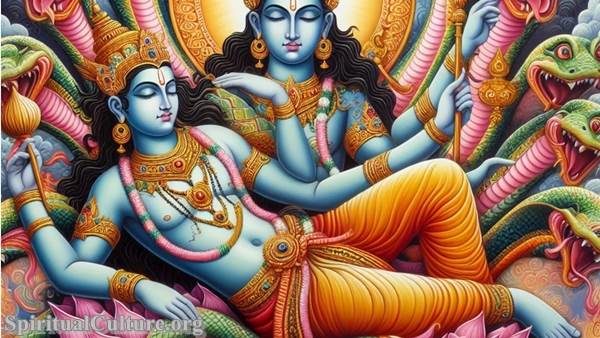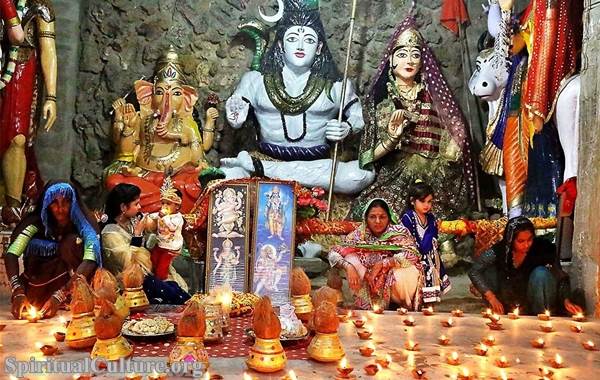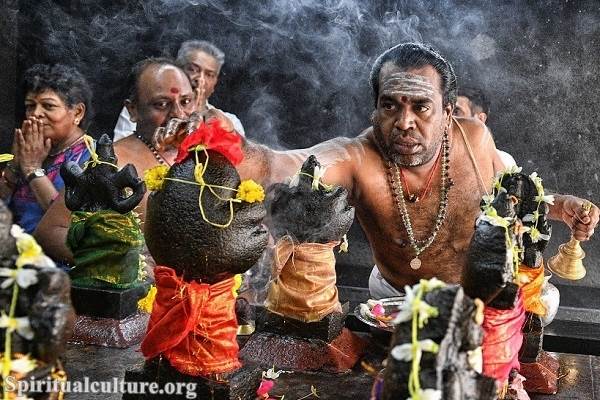Death, though deeply sorrowful, is not seen as the end in Hindu tradition. It is a profound transition — the soul (ātman) leaving behind its temporary garment to continue its eternal journey. In the moment of death, Hinduism offers not just ritual, but spiritual direction: a map through grief and into transcendence. These funeral rites (antyeshti) are more than cultural practices — they are sacred bridges between this world and the next.
As Spiritual Culture, we invite you to explore this sacred dimension of Hindu funerary traditions — not only to understand what happens after death in Hindu belief, but how every action taken by the family, priest, and community serves to comfort the living and guide the soul onward. In this article, we will walk through the stages of Hindu funeral rites, the soul’s journey according to the scriptures, and the deeper significance behind every prayer and flame.
The Meaning of Death in Hinduism
Death Is Not the End — It Is a Passage
In Hinduism, life and death are two sides of a single cosmic rhythm — samsara, the cycle of birth, death, and rebirth. The soul (ātman) is eternal, never created and never destroyed. The Bhagavad Gita (2:20) declares:
“For the soul there is neither birth nor death at any time… It is unborn, eternal, ever-existing, and primeval.”
Thus, death is not feared as annihilation, but revered as transition. The body, which perishes, is like a set of clothes the soul removes, as explained in Bhagavad Gita 2:22:
“As a person puts on new garments, giving up old ones, the soul similarly accepts new material bodies.”
This foundational truth shapes every aspect of the Hindu funeral — from the washing of the body to the lighting of the pyre, each action helps release the soul and honor its path.
The Antyeshti Rites: The Final Sacrament
What Is Antyeshti?
Antyeshti, meaning “last sacrifice,” is the final samskara (sacrament) of a person’s life. Just as there are rites for birth (namakarana), initiation (upanayana), and marriage (vivaha), death too is ritually marked.
These rites are rooted in the Vedas and refined through centuries of cultural and regional variation, yet the heart remains the same: to help the soul depart peacefully, without attachment, and begin its next phase.
Key Elements of Hindu Funeral Rituals
1. Preparation of the Body
The body is bathed in sacred water, often from the Ganges or a nearby river, symbolizing purification. It is then clothed in simple white garments, with sandalwood paste or vibhuti (holy ash) sometimes applied to the forehead.
Tulsi leaves and a few drops of Ganga water may be placed in the mouth, believed to sanctify the soul’s departure.
2. Procession to the Cremation Ground
The body is carried on a bamboo bier by male family members. The eldest son or closest male relative traditionally leads, symbolizing duty (dharma) and lineage.
Chanting of mantras like “Rām nām satya hai” (The name of Rama is truth) accompanies the procession — affirming divine presence even in grief.
3. Cremation (Agni Sanskar)
Cremation is the preferred method of body disposal in Hinduism, as fire (agni) is seen as a purifier and conveyor of the soul. The Garuda Purana describes cremation as a means of burning the physical ties to earth, enabling the soul to ascend.
The chief mourner circles the body and lights the pyre, often whispering sacred mantras into the ear of the deceased. The moment the fire is lit is sacred — a letting go of the physical form.
4. Post-Cremation Rites (Shraddha and Pind Daan)
Over the following days (often 10 to 13), various rituals are performed to help the soul’s journey:
- Pind Daan: Offerings of rice balls (pinda) are made to nourish the soul in its subtle body.
- Tarpana: Water libations are offered to ancestors, invoking their blessings.
- Shraddha: A special meal and ceremony performed by the family to honor the departed and ensure their peaceful transition.
The Soul’s Journey After Death
The Subtle Body and the Journey to the Afterlife
According to Hindu texts like the Garuda Purana and Brihadaranyaka Upanishad, the soul departs with a sūkṣma sharīra (subtle body) — a non-material sheath composed of mind, intellect, ego, and vital energies.
This subtle body journeys through various realms, influenced by the person’s karma and mental state at the time of death.
The 13-Day Journey (and Beyond)
- Day 1–10: The soul is believed to linger near the Earth, gradually detaching from the physical plane.
- Day 11–13: The family performs rites to aid the soul’s ascent to Pitrloka (realm of ancestors) or higher realms.
- Post-13 Days: The soul either takes birth again, remains in the ancestral realm, or progresses toward moksha — liberation.
This period is a sacred time of mourning, prayer, and introspection for the family — symbolizing their continued bond with the departed, even as they release them.
The Deeper Spiritual Meaning of Funeral Rites
Letting Go with Love, Not Fear
In the face of death, Hinduism teaches not panic, but presence. Grief is acknowledged but channeled through ritual — not to avoid sorrow, but to transform it into sacred memory and action.
The funeral is not only about the soul that departs, but the hearts that remain. Ritual helps the bereaved shift from attachment to acceptance.
Fire, Water, Earth — Returning to the Elements
In Hindu cosmology, the body is made of the five elements (pancha mahabhuta): earth, water, fire, air, and space. Cremation is a return — the body dissolves back into the elements, while the soul continues.
This ritual echo of dissolution reflects a deep spiritual ecology — nothing is lost, only transformed.
Scriptures That Illuminate the Journey
Here are some key scriptural references that underpin Hindu funeral philosophy:
- Bhagavad Gita 2:13:
“Just as the boyhood, youth, and old age come to the embodied Soul in this body, in the same manner, is the attaining of another body.”
— Life is continuity. - Garuda Purana (Preta Khanda):
This text details the soul’s post-death journey, the stages of purgation, and the importance of rites like pind daan and shraddha. - Chandogya Upanishad 6.8.7:
“Tat tvam asi” — Thou art That — reminds us that the soul and the divine are ultimately one.
Cultural Variations Across India
North vs. South, Shaiva vs. Vaishnava, Rural vs. Urban
While the essential framework is pan-Hindu, there are regional differences:
- In South India, ashes are often scattered in the sea, while in North India, immersion in the Ganges is more common.
- Vaishnavas may invoke Lord Vishnu in funeral prayers, while Shaivites may chant “Om Namah Shivaya.”
- In rural areas, customs may be more ancient and localized, while urban ceremonies often involve modern crematoriums and abbreviated rites.
Yet despite differences in practice, the spiritual essence remains shared: honoring the soul, easing its passage, and healing the living.
Funeral Rites and the Living: A Mirror for the Soul
Why the Rituals Matter Even If You’re Not Hindu
Even for those outside Hindu tradition, there is deep wisdom to be gleaned:
- Facing impermanence: The rites teach us to befriend change and death, rather than deny or fear them.
- Caring for the soul: The soul is treated not as a concept, but as a living traveler — deserving of dignity.
- Honoring ancestors: The rituals are a living relationship with lineage — not just history, but presence.
In a world where death is often hidden away, Hindu funeral rites offer a spiritual clarity — that to honor the dead is also to remember who we truly are.
Reflect and Reimagine
What if we viewed death not as the enemy of life, but its sacred completion?
Hindu funeral rites remind us that every soul is on a journey — from one form to another, from visible to invisible, from body to boundlessness. Each mantra, each offering, each tear is part of that sacred release.
For those who grieve, these rites offer not just comfort, but meaning. For those who live, they whisper a truth: we too shall one day cross that threshold. And the way we live — with awareness, compassion, and reverence — prepares the way we die.
Let us honor death as the soul’s onward pilgrimage, and life as the gift it truly is.



